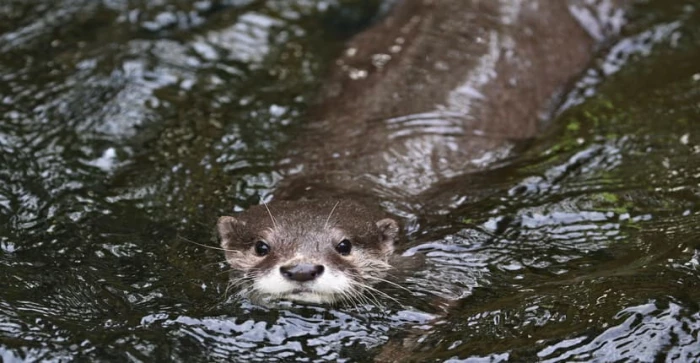
Otter Survey in Stocksbridge
Request a free quote for your Otter assessment todayAt Invasive Weed, we specialise in otter surveys to support planning applications in Stocksbridge, riverbank developments, and infrastructure projects while ensuring compliance with UK wildlife protection laws.
Otters are a protected species in the UK, and their habitats, including rivers, lakes, and wetlands, require careful assessment before any development can proceed in Stocksbridge. If your project involves waterways, bridges, flood defence works, or riverbank modifications, an otter survey may be required to assess potential impacts.
Our team of licensed ecologists conducts preliminary habitat assessments, presence/absence surveys in Stocksbridge, activity & population density surveys, and mitigation planning to ensure legal compliance and ecological protection.
For an otter survey in Stocksbridge and across the UK, contact us today for a consultation.
What Is the Otter Survey Process in Stocksbridge?
The otter survey process begins with an initial site walkover in Stocksbridge, where ecologists inspect the site’s waterways, floodplains, and wetland areas to identify potential otter habitats. If habitat suitability is confirmed, field surveys & monitoring in Stocksbridgeare conducted to record evidence such as spraints (droppings), footprints, and holts (dens).
During this phase, data is collected and analysed to determine population size, activity levels, and habitat quality. The final step is producing a comprehensive report with recommendations, detailing the findings, legal implications, and necessary mitigation measures to support planning applications and conservation efforts.
What Types of Otter Surveys Are Available in Stocksbridge?
Otter surveys include habitat assessments in Stocksbridge, presence detection, population analysis, and mitigation planning.
These surveys in Stocksbridge also include:
Preliminary habitat assessment in Stocksbridge – Walkover survey to identify suitable habitat conditions and determine if further presence/absence surveys are needed.
Presence/absence survey in Stocksbridge – Searches for signs of otter activity, including spraints, footprints, holts, and feeding remains along riverbanks and wetlands.
Activity & population density survey in Stocksbridge – Estimates otter numbers and movement patterns across the site for mitigation and conservation planning.
Mitigation & conservation strategies in Stocksbridge – Develops measures such as habitat restoration, wildlife corridors, and protective fencing to comply with legal protections and conservation goals.

How Much Does an Otter Survey Cost in Stocksbridge?
Otter survey costs range from £400 to £6,000+ in Stocksbridge, depending on survey type, site complexity, and mitigation requirements.
A preliminary habitat assessment in Stocksbridge, which evaluates the site for suitable otter habitats, typically costs between £400 and £900. If further investigation is required, a presence/absence survey in Stocksbridge, which looks for signs of otters such as spraints (droppings), footprints, feeding remains, and holts, can range from £1,000 to £2,500 in Stocksbridge, depending on the size of the site and survey effort required.
For projects where otters are confirmed on-site, an activity & population density survey in Stocksbridge may be needed to estimate their numbers and movement patterns, with costs ranging between £2,500 and £5,000.
More detailed mitigation & conservation strategies in Stocksbridge, including habitat restoration, wildlife corridors, and protective fencing, can range from £3,000 to £6,000, particularly if licensed mitigation measures are required.
Additional expenses may include licensing fees (£200–£500), habitat enhancement in Stocksbridge (such as vegetation restoration), and follow-up monitoring (£500–£1,500 per visit).
Contact Invasive Weed in Stocksbridge to get customised pricing for otter survey projects in targeted biodiversity.
Is a Permit Required for an Otter Survey in Stocksbridge?
An otter survey inspection should evaluate whether a development project has the potential to disturb or impact otter populations, necessitating the issuance of a Mitigation License from Natural England in Stocksbridge or the relevant conservation authority.
Under the Wildlife and Countryside Act 1981 in Stocksbridge, it is illegal to capture, injure, or disturb otters; damage or destroy their holts (dens) or resting places; or obstruct access to their habitats.
Additionally, any construction, excavation, or land clearance affecting otter habitats must have a mitigation plan in place to ensure compliance. If otters are found on-site, an Otter Mitigation License in Stocksbridge may be necessary before development can proceed.
We assist in obtaining permits, conducting mitigation planning, and ensuring full legal compliance in Stocksbridge.
How Long Does an Otter Survey Take in Stocksbridge?
Otter surveys take from one week to several months in Stocksbridge, depending on survey type, seasonality, and project scope.
A preliminary habitat assessment in Stocksbridge can typically be completed within one to two weeks, while a presence/absence survey may require multiple site visits over several weeks. Otter surveys are best conducted in spring and autumn in Stocksbridge, when water levels are stable and otter activity signs are most visible.
If an activity & population density survey in Stocksbridgeor mitigation plan is required, the process may extend over several months in Stocksbridge, particularly if habitat restoration or wildlife corridor creation is needed.
What Are the Environmental Considerations in an Otter Survey in Stocksbridge?
Otter surveys approach includes mitigation strategies in Stocksbridge such as habitat restoration, the creation of wildlife corridors, and protective fencing to maintain connectivity between otter populations. We also ensure compliance with conservation laws in Stocksbridge, helping developers integrate biodiversity protection measures into their projects.
By implementing environmentally responsible strategies, we support both wildlife conservation and sustainable development.
Contact Invasive Weed in Stocksbridge to get detailed information on the otter surveys in targeted biodiversity.
We cover Stocksbridge (South Yorkshire)
